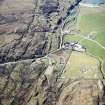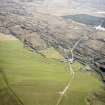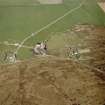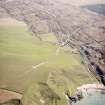Pricing Change
New pricing for orders of material from this site will come into place shortly. Charges for supply of digital images, digitisation on demand, prints and licensing will be altered.
Upcoming Maintenance
Please be advised that this website will undergo scheduled maintenance on the following dates:
Thursday, 9 January: 11:00 AM - 3:00 PM
Thursday, 23 January: 11:00 AM - 3:00 PM
Thursday, 30 January: 11:00 AM - 3:00 PM
During these times, some functionality such as image purchasing may be temporarily unavailable. We apologise for any inconvenience this may cause.
Islay, Kilchiaran, Kilchiaran Steading
Farmstead (19th Century), Watermill (19th Century)
Site Name Islay, Kilchiaran, Kilchiaran Steading
Classification Farmstead (19th Century), Watermill (19th Century)
Canmore ID 37463
Site Number NR26SW 36.01
NGR NR 20696 60311
Datum OSGB36 - NGR
Permalink http://canmore.org.uk/site/37463
- Council Argyll And Bute
- Parish Kilchoman
- Former Region Strathclyde
- Former District Argyll And Bute
- Former County Argyll
NR26SW 36.00 NR 20861 60366 Kilchiaran Farm
NR26SW 36.01 NR 20696 60311 Steading
(NB. Steading used to be recorded as NR26SW 36)
(Location cited as NR 206 603). Threshing mill, Kilchiaran. 19th century. Powered by an all-iron, high-breast wheel, about 18ins (0.45m) wide by 16ft (4.87m) diameter with rim drive.
J R Hume 1977.
Measured Survey (July 1974)
Field Visit (September 1980)
This farmsteading is situated at the head of a narrow sheltered valley at Kilchiaran about 130m WSW of its associated farmhouse and 270m NE of the medieval chapel. The house and steading date from the second quarter of the 19th century, probably soon after 1826, when a new farm with an Ayrshire tenant was established here following the clearance of the old township of Kilchiaran. (Storrie 1981; The farmhouse itself is a cubical hip-roofed block with a plain three-bay frontage facing SW). The most distinctive feature of the steading is a semicircular inner cattle-court about 58mm diameter which is entered from a rectangular courtyard aligned NW-SE. The buildings throughout are constructed of lime-mortared rubble masonry comprising local igneous rock and slate; for the greater part they are hip-roofed and covered with local
slates. (The slate-quarries are situated on the coast about 800m W of the steading and are centred on NR 198 608; the slates exhibit a tendency to split into vertical 'pencils'. Papers relating to the working of the slate-quarry in the late 19th and early 20th centuries are in Islay Estate Papers, box file marked 'Mining I' [uncatalogued] and in the Factor's Account-books of the same period)
The outer courtyard, which is cobbled, is approached through gates at the E and w ends. The w limb of the N range incorporates bothies, workshops and a four-bay cart-shed, all with lofts reached by external stairs at the rear and at the E end. The cart-bays have shallow segmental arches. At the centre of the N range there is a barn of similar height which has an enlarged central doorway and flanking slit-windows. A rear cross-wing contains a belt-driven, and formerly water-powered, threshing-mill made by J Drummond of Cumnock. Against the E wall of this wing are the remains of a narrow all-iron water-wheel 4.8m in diameter and just over 0.8m wide; it is of low breastshot type with an internal rim drive and was made by P & R Fleming of Glasgow. A sluice-gate controlled the flow of water to a short stone-lined lade from the nearby mill-pond, and the tail-race ran underneath the steading to emerge on the s side of the semicircular court. The single-storeyed E limb of the N range contains a dairy, a byre and a turnip-shed, and there are slab dripstones above three of the doors.
The courtyard is bounded on the s side by two single-storeyed blocks, separated by the entrance to the inner court. The E block has been partly rebuilt in comparatively recent times to serve as a byre or milking-parlour; the w block still retains traditional stabling facilities and at the W end incorporates a harness-room and additional cart-shed. The semicircular court is divided into three equal sectors by two radiating cross-walls which terminate near the centre in cylindrical gate-piers. A corresponding pier stands at the SE angle of the stable, and a fourth pier was probably removed when the milking-parlour was constructed. Internal partitions continue the lines of the radiating walls, and each self-contained sector in this tripartite division originally possessed four large openings spanned by wooden lintels; most of these openings have been blocked or modified and other internal partitions inserted. The SE sector is known to have been altered in order to accommodate pigs, while the NW end of the court has been demolished to make space for a Dutch Barn.
Visited September 1980
RCAHMS 1984


































































